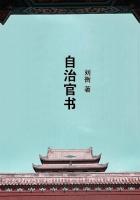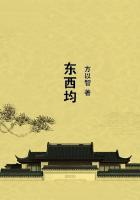At this point we must, for a brief while, drop the history of the famous aeronaut whose early career we have been briefly sketching in the last chapter, and turn our attention to a new feature of English ballooning. We have, at last, to record some genuinely scientific ascents, which our country now, all too tardily, instituted. It was the British Association that took the initiative, and the two men they chose for their purpose were both exceptionally qualified for the task they had in hand. The practical balloonist was none other than the veteran Charles Green, now in his sixty-seventh year, but destined yet to enjoy nearly twenty years more of life. The scientific expert was Mr. John Welsh, well fitted for the projected work by long training at Kew Observatory. The balloon which they used is itself worthy of mention, being the great Nassau Balloon of olden fame.
Welsh was quick to realise more clearly than any former experimentalist that on account of the absence of breeze in a free balloon, as also on account of great solar radiation, the indications of thermometers would, without special precautions, be falsified. He therefore invented a form of aspirating thermometer, the earliest to be met with, and far in advance of any that were subsequently used by other scientists. It consisted of a polished tube, in which thermometers were enclosed, and through which a stream of air was forced by bellows.
The difficulty of obtaining really accurate readings where thermometers are being quickly transported through varying temperatures is generally not duly appreciated. In the case of instruments carried m a balloon it should be remembered that the balloon itself conveys, clinging about it, no inconsiderable quantity of air, brought from other levels, while the temperature of its own mass will be liable to affect any thermometer in close neighbourhood. Moreover, any ordinary form of thermometer is necessarily sluggish in action, as may be readily noticed. If, for example, one be carried from a warm room to a cold passage, or vice versa it will be seen that the column moves very deliberately, and quite a long interval will elapse before it reaches its final position, the cause being that the entire instrument, with any stand or mounting that it may have, will have to adapt itself to the change of temperature before a true record will be obtained. This difficulty applies unavoidably to all thermometers in some degree, and the skill of instrument makers has been taxed to reduce the errors to a minimum. It is necessary, in any case, that a constant stream of surrounding air should play upon the instrument, and though this is most readily effected when instruments are carried aloft by kites, yet even thus it is thought that an interval of some minutes has to elapse before any form of thermometer will faithfully record any definite change of temperature. It is on this account that some allowance must be made for observations which will, in due place, be recorded of scientific explorers; the point to be borne in mind being that, as was mentioned in a former chapter, such observations will have to be regarded as giving readings which are somewhat too high in ascents and too low in descents.
Two forms of thermometers at extremely simple construction, yet possessed of great sensibility, will be discussed in later chapters.
The thermometers that Welsh used were undoubtedIy far superior to any that were devised before his time and it is much to be regretted that they were allowed to fall into disuse. Perhaps the most important stricture on the observations that will have to be recorded is that the observers were not provided with a base station, on which account the value of results was impaired. It was not realised that it was necessary to make observations on the ground to compare with those that were being made at high altitudes.
Welsh made, in all, four ascents in the summer and autumn of 1852 and in his report he is careful to give the highest praise to his colleague, Green, whose control over his balloon he describes as "so complete that none who accompanied him can be otherwise than relieved from all apprehension, and free to devote attention calmly to the work before him."
The first ascent was made at 3.49 p.m. on August the 17th, under a south wind and with clouds covering some three-quarters of the sky. Welsh's first remark significant, and will be appreciated by anyone who has attempted observational work in a balloon. He states naively that "a short time was lost at first in an attempt to put the instruments into more convenient order, and also from the novelty of the situation." Then he mentions an observation which, in the experience of the writer, is a common one. The lowest clouds, which were about 2,500 feet high and not near the balloon, were passed without being noticed; other clouds were passed at different heights; and, finally, a few star-shaped crystals of snow; but the sun shone almost constantly. Little variation occurred in the direction of travel, which averaged thirty-eight miles an hour, and the descent took place at 5.20 p.m. at Swavesey, near Cambridge.
The second ascent took place at 4.43 p.m. on August 26th, under a gentle east wind and a partially obscured sky. The clouds were again passed without being perceived. This was at the height of 3,000 feet, beyond which was very clear sky of deep blue. The air currents up to the limits of 12,000 feet set from varying directions. The descent occurred near Chesham at 7.45 p.m.
The third ascent, at 2.35 p.m. on October the 21st was made into a sky covered with dense cloud masses lying within 3,000 and 3,700 feet. The sun was then seen shining through cirrus far up. The shadow of the balloon was also seen on the cloud, fringed with a glory, and about this time there was seen "stretching for a considerable length in a serpentine course, over the surface of the cloud, a well-defined belt, having the appearance of a broad road."















